- Home
- G. K. Chesterton
The Man Who Was Thursday (Penguin ed) Page 2
The Man Who Was Thursday (Penguin ed) Read online
Page 2
The plot of The Man Who Was Thursday, observed one contemporary critic of the book, in a doomed attempt to summarize its contents, ‘and Mr Chesterton will excuse us for saying that the plot’s the thing, turns on the discovery by a poet, who is also a detective, of a nest of Anarchists, each of whom appears to be trying to checkmate the others.’14 But, although it positively mesmerizes the novel’s reader, the plot is not the thing. This is not, for instance, The Riddle of the Sands (1903), Erskine Childers’s naval adventure narrative about the discovery of Germany’s covert plans for an invasion of England. It is too anarchic, too confused even, to be memorable chiefly for the arc of its narrative. For that matter, Chesterton’s novel is not even particularly interested in characterization, let alone in representing the convolutions of an individual’s consciousness, the problem with which contemporaneous modernist novelists grappled. This is not Joseph Conrad’s The Secret Agent (1907) either. Something else is going on beneath the novel’s plot, beneath its characterization, something of seemingly immense philosophical or theological importance, though this remains impossible precisely to identify. Like Chesterton’s Father Brown in ‘The Sins of Prince Saradine’ (1910), ‘somehow [we have] not seen the real story, but some game or masque.’15
So is the plot an allegory, as a number of critics have suggested? No, not exactly. I suspect that the plot is a plot. That is, Chesterton’s plot, which involves the anarchists’ plot to overthrow order and the detectives’ plot to overthrow disorder, is itself a form of plot; a sort of conspiratorial campaign against the complacent reader expecting adventure fiction. The revelations of this authorial plot, however, centre in the end not on the malign motives behind extraordinary events, but on what might be called the benign motivelessness of ordinary events. In his characteristically energetic, argumentative book about Browning, published in 1903, Chesterton had praised the poet’s commitment to the commonplace and even the superficial; and it is to this almost sublime state of superficiality that he himself aspired: ‘To the man who sees the marvellousness of all things, the surface of life is fully as strange and magical as its interior; clearness and plainness of life is fully as mysterious as its mysteries.’16 The fiendishly complicated plot of The Man Who Was Thursday is a deliberate attempt to bamboozle his readers, and so to leave them, at the novel’s climactic conclusion, both amazed and relieved at the divine simplicity of the universe, its grace and its gratuitousness.
Chesterton’s novel vibrates and reverberates like ‘one incessant carnival of insane and inspired improvisation’, as he himself once said of Dickens’s life.17 It is uncontainable. In consequence, the first critics to review The Man Who Was Thursday channelled much of their energy into categorizing it generically. This is an activity that finally seems as futile as the central characters’ attempt to capture Sunday atop his galloping elephant in Chapter 13. For the book comprises a riotously colourful patchwork of different genres, including the chivalric romance, the detective story, the dream poem, the dramatic farce, the dystopia, the fairy tale, the gothic fantasia, the allegorical masquerade, the melodrama, the nonsense tale, the novel of ideas, the political fable, the religious allegory, the spy thriller and the theological treatise; among other things. It consists of everything, in short, except the predictable conventions of the realist or naturalist novel. On the contrary, it is ostentatiously antirealist, or ‘irrealist’.18 And in this respect it inhabits a tradition that Chesterton himself explored, in an essay entitled ‘Dreams’ (1901), a tradition of ‘great works which mix up abstractions fit for an epic with fooleries not fit for a pantomime’, and ‘which present such a picture of literary chaos as might be produced if the characters of every book from Paradise Lost to Pickwick Papers broke from their covers and mingled in one mad romance’. Such books, this manifesto concludes, have ‘the same unity that we find in dreams’ – that is, nothing more than ‘an absolute unity of emotion’.19
In 1908, the anonymous critic for the Times Literary Supplement was dismissive of The Man Who Was Thursday, precisely because, as a collage of all the non-realist forms imaginable, it proves so infuriatingly resistant to classification. ‘As literature,’ he expostulated, ‘it is a hopeless confusion de genres; a scurrying, door-slamming farce that ends like a chapter in the Apocalypse.’20 Others, like the reviewer for the Hearth and Home – possibly Frank Harris, the author of The Bomb (1908) – were more appreciative:
The solemn men who read books for the London daily papers have conscientiously labelled, as best they could, The Man Who Was Thursday. It is a philosophy, a farce; a sermon, a practical joke; a newer ‘New Arabian Nights’, the dawning of a second Poe; an allegory, a brilliant bit of blague; in one word, it is everything!
‘Mr Chesterton,’ he added significantly, ‘calls it “a nightmare”.’21 This emphasis demonstrated a penetration of which Chesterton probably approved. On more than one occasion, especially at the end of his life, he complained that readers of The Man Who Was Thursday had ignored its subtitle, ‘A Nightmare’, and consequently misunderstood the book. In Autobiography, for example, he impatiently pointed out ‘that hardly anybody who looked at the title ever seems to have looked at the sub-title; which was “A Nightmare”, and the answer to a good many critical questions.’22 And in an article for the Illustrated London News, published the day before his death in 1936, Chesterton was equally peevish when he objected to ‘that trick of missing the point of a story, or sometimes even the obvious sense of the very name of a story’ (see Appendix, p. 159).
In the case of The Man Who Was Thursday, it could be contended, the sense of the name of the story is precisely that it is not sense. Or that it consists of sense and nonsense at once. The title is itself in this respect nightmarish. It is a cocktail – a Molotov Cocktail – of logic and the lunatic. ‘The book was called The Man Who Was Thursday: A Nightmare,’ Chesterton insisted; ‘It was not intended to describe the real world as it was, or as I thought it was, even when my thoughts were considerably less settled than they are now’ (159). The subtitle is equivalent to those his contemporaries used to identify other species of fantastic fiction – ‘A Utopia’, for example, or ‘A Scientific Romance’ – except that it refuses to offer its readers the clues needed to read and understand it. In its passionate fidelity to the truths that it pursues, and its committed refusal of realist forms as a means of communicating them, Chesterton’s book deliberately mimics the anarchistic attitude that it mocks. In the Observer, Harrison perceptively noted that Chesterton had invested the narrative with ‘his own Anarchic comprehension and incomprehensiveness.’23
So what precisely motivated the nightmare dramatized in The Man Who Was Thursday? The idea for this novel, as William Oddie has conclusively demonstrated, germinated in the early to mid-1890s, when Chesterton, a student at the Slade School of Art, experienced a psychological collapse of some description.24 The bad dream it depicts is ‘the world of wild doubt and despair which the pessimists were generally describing at that date’, as he himself put it in his final piece for the Illustrated London News (159). The book is in the first instance, then, an attack on the nihilism of the fin de siècle, which appears to have assumed an almost psychotic significance for Chesterton. Chesterton’s time at the Slade, a time of intense emotional and intellectual confusion, was the moment at which, for one terrifying instant, and as if accidentally, he ingested the logic of his age. Momentarily, he became a pessimist. This precipitated an anaphylactic shock so dramatic that he spent the remaining decades of his life developing the philosophical and spiritual resources required to immunize him from it. In an article called ‘The Nightmare’ (1907), he subsequently reflected that ‘nothing is so delightful as a nightmare – when you know it is a nightmare’. He added emphatically that ‘sanity may play with insanity; but insanity must not be allowed to play with sanity.’ During the 1890s, as he perceived it, the insanity of the epoch sported with his sanity. In a defiant slogan that still seems faintly defensive, this article concludes:
‘I will ride on the Nightmare; but she shall not ride on me.’25 At the fin de siècle, during his time at the Slade, the Nightmare rode on him. In effect, Chesterton therefore inscribed the same slogan, characteristically chivalric in tone, on the title page of The Man Who Was Thursday.
The form of philosophical pessimism that most appalled Chesterton at this time was Impressionism, as embodied above all by James McNeill Whistler, the Slade’s presiding deity in the 1890s. In 1877, the art critic John Ruskin had famously accused Whistler – who promptly sued him – of ‘flinging a pot of paint in the public’s face’ when he exhibited his ‘Nocturne in Black and Gold: The Falling Rocket’ (1874). A decade and a half later, Ruskin’s sense of aesthetic shock, itself indisputably ethical in its implications, transformed into Chesterton’s sense of philosophical and moral despair. The impact of that violent gesture, according to Chesterton, was far more corrosive and destructive than even Ruskin, himself terminally insane by this time, could have imagined. For, by the mid-1890s, Whistler had taught an entire generation of impressionable art students to be Impressionists. This, as Chesterton explains in Autobiography, had a profound ‘spiritual significance’:
I mean that it illustrated scepticism in the sense of subjectivism. Its principle was that if all that could be seen of a cow was a white line and a purple shadow, we should only render the line and the shadow; in a sense we should only believe in the line and the shadow, rather than in the cow. […] Whatever may be the merits of this as a method of art, there is obviously something highly subjective and sceptical about it as a method of thought. It naturally lends itself to the metaphysical suggestion that things only exist as we perceive them, or that things do not exist at all. The philosophy of Impressionism is necessarily close to the philosophy of Illusion. And this atmosphere tended to contribute, however indirectly, to a certain mood of unreality and sterile isolation that settled at this time upon me; and I think upon many others.26
The pot of paint is packed, like a rocket, with explosives; and the Impressionist students that Chesterton encountered at the Slade are the aesthetic or intellectual equivalent of bomb throwers. It is anarchism in its philosophical form, rather than its political one, that is thus the object of his feverish polemic in The Man Who Was Thursday. As Samuel Hynes specified, ‘the force of evil in [the novel] is not anarchism, but anarchy, the total dissolution of order.’27 Like Shelley’s poem of that name, it is a Masque of Anarchy.
Nihilism, and a generalized climate of pessimism, is then the real problem. This is abundantly evident from Chesterton’s melancholic dedicatory verse, at the beginning of The Man Who Was Thursday, to his old school-friend, E. C. Bentley (see p. xxxvii). It is a description of the spiritual sclerosis that crippled the end of the nineteenth century: ‘The world was very old indeed when you and I were young,’ Chesterton intones, like a man who has himself aged prematurely because he has been contaminated by the climate of decadence. It is in this respect a reinscription of Matthew Arnold’s ‘Dover Beach’ (1867), a poem which had mourned the retreating roar of the Sea of Faith on the ‘naked shingles of the world’, and, in muted apocalyptic tones, evoked ‘a darkling plain / Swept with confused armies of struggle and flight, / Where ignorant armies clash by night’. In the opening lines of his dedication, Chesterton recalls the storm cloud of the 1890s, and evokes an atmosphere of ‘aimless gloom’, illuminated only by the ghastly luminescence of Whistler’s example. The prevailing mood of pessimism is ‘a sick cloud upon the soul’. The fin de siècle that the poem depicts – in which ‘Science announced nonentity and art admired decay’ – is a nightmarish morality play in which Chesterton and Bentley have become trapped. ‘Crippled vices’, among them Lust and Fear, encircle these innocents ‘in antic order’. ‘This is a tale of those old fears, even of those emptied hells’, he continues. Nonetheless, the dedication testifies to the fact that this nightmare has ended: ‘We have found common things at last’, including marriage and a creed (these ‘common things’, though, are the most miraculous things of all, according to Chesterton’s creed). The truth about the 1890s can in consequence be safely written and safely read, he concludes – as if the process of composing the book had been a protracted attempt to detonate an unexploded bomb, or to conduct a kind of controlled explosion.
The Man Who Was Thursday is a record of Chesterton’s dark night of the soul. Indeed, its narrative is framed as a nocturne, one painted not merely in black and gold but in all the colours he could imagine. The dedication alludes to Chesterton and Bentley roaming through the night, deep in discussion, in order to overcome their sense of spiritual displacement: ‘The doubts that drove us through the night as we two talked amain, / And day had broken on the streets e’er it broke upon the brain’ (xxxvii). The novel itself begins at sunset, a sunset that ‘looked like the end of the world’, when Syme first encounters Gregory in the streets of Saffron Park. Syme’s appearance is so sudden, the narrator intimates, that the other residents of the place ‘looked at him as if he had that moment fallen out of that impossible sky’ (3). The ‘attractive unreality’ (2) of the fantastic suburban setting thus starts to deepen. It is at the beginning of Chapter 2 – when Syme and Gregory arrive outside a ‘dreary and greasy beershop’, secretly bristling with insane incendiary devices which look like ‘the bulbs of iron plants, or the eggs of iron birds’ (11, 13) – that the narrative plunges into nightmare. The plot only ceases to seem fantastical in the book’s penultimate paragraph, when Syme gradually comes to full consciousness again and realizes that he has been ‘walking along a country lane with an easy and conversational companion’, namely his friend and rival, Gregory. Dawn is breaking, and Syme is surprised to discover ‘rising all round him on both sides of the road the red, irregular buildings of Saffron Park’ (158). They are back where they began, after restlessly walking throughout the night. The entire feverish narrative, then, has been a sort of psychotic episode, one apparently unnoticed by Syme’s companion. In freeing himself from it, he feels as if he is ‘in possession of some impossible good news, which made every other thing a triviality, but an adorable triviality’ (158).
Chesterton talks in Autobiography about emerging from the pessimism of the fin de siècle and forging instead a philosophy of optimism:
When I had been for some time in these, the darkest depths of the contemporary pessimism, I had a strong inward impulse to revolt; to dislodge this incubus or throw off this nightmare. But as I was still thinking the thing out by myself, with little help from philosophy and no real help from religion, I invented a rudimentary and makeshift mystical theory of my own. It was substantially this: that even mere existence, reduced to its most primary limits, was extraordinary enough to be exciting. Anything was magnificent as compared with nothing. Even if the very daylight were a dream, it was a day-dream; it was not a nightmare. The mere fact that one could wave one’s arms and legs about (or those dubious external objects in the landscape which were called one’s arms and legs) showed that it had not the mere paralysis of a nightmare. Or if it was a nightmare, it was an enjoyable nightmare.28
In the concluding paragraphs of The Man Who Was Thursday, Chesterton depicts a daylight in which, metaphorically speaking, Syme cautiously but triumphantly waves his arms and legs about, supremely grateful for the mere fact of existence. ‘Syme could only feel an unnatural buoyancy in his body and a crystal simplicity in his mind that seemed to be superior to everything that he said or did’, Chesterton writes (158). Syme has come out of the pessimism that he had slipped into like a coma, and finds himself susceptible at last to a spirit of optimism, which Chesterton defines as ‘a sort of mystical minimum of gratitude’. ‘At the back of our brains,’ he affirms in the same paragraph of his Autobiography, ‘there [is] a forgotten blaze or burst of astonishment at our own existence’, and the ‘object of the artistic and spiritual life [is] to dig for this submerged sunrise of wonder’.29 It is this that inspired Chesterton, from the end of the nineteenth century, ‘to write against the
Decadents and Pessimists who ruled the culture of the age.’30
In Orthodoxy, composed at roughly the same time as The Man Who Was Thursday, Chesterton gives an important preliminary account of what he calls ‘this elementary wonder’, the principal function of which is to recall us, as in an artistic or spiritual epiphany, to a profound, beatified sense of being. In order to illustrate it, he sketches an archetypal subject – a modern, urban subject – who is condemned to live in a state of non-being:
We have all read in scientific books, and, indeed, in all romances, the story of the man who has forgotten his name. This man walks about the streets and can see and appreciate everything; only he cannot remember who he is. Well, every man is that man in the story. Every man has forgotten who he is. […] We are all under the same mental calamity; we have forgotten our names. We have all forgotten what we really are. All that we call common sense and rationality and practicality and positivism only means that for certain dead levels of our life we forget that we have forgotten. All that we call spirit and art and ecstasy only means that for one awful instant we remember that we forget.31
Who is the distinctly neurotic everyman, famous from ‘scientific books’ and romances alike, to whom Chesterton refers in this curious passage? I suspect that the ‘story of the man who has forgotten his name’, who roams the streets but cannot recall his identity, is that of the so-called ‘mad traveller’. In 1887, a priest, who had abruptly disappeared from his home in Rhode Island a couple of months previously, reappeared in Pennsylvania under a different name. He had no memory of his former identity. In France, in the same year, another instance of ‘ambulatory automatism’, as some specialists named it, came to light; and, as a result of interest from the medical establishment, it quickly acquired the status of a specific mental disorder, sometimes called fugue. This initiated what Ian Hacking has diagnosed as ‘the fugue epidemic of the 1890s’.32 For Chesterton, psychologically traumatized as he had been in the 1890s, the man suffering from this apparently inexplicable form of amnesia is paradigmatic, because all individuals, in the times in which he lived, seemed oddly inured to the environment they inhabited. In this anaesthetic condition, ‘we have all forgotten what we really are’. Everyday life is a constant state of forgetting, according to Chesterton; and art or spiritual ecstasy alone can for a moment make us forget that we have forgotten.

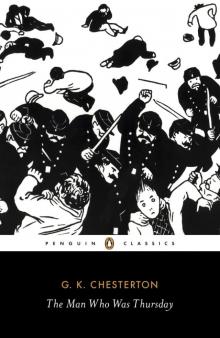 The Man Who Was Thursday: A Nightmare
The Man Who Was Thursday: A Nightmare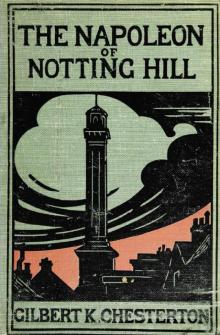 The Napoleon of Notting Hill
The Napoleon of Notting Hill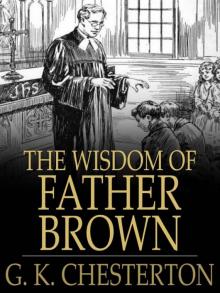 The Wisdom of Father Brown
The Wisdom of Father Brown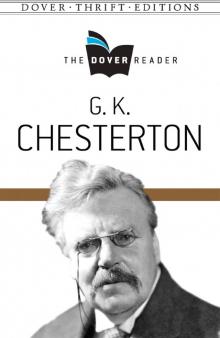 G K Chesterton- The Dover Reader
G K Chesterton- The Dover Reader The Essential G. K. Chesterton
The Essential G. K. Chesterton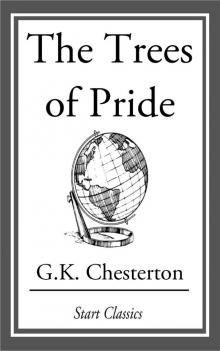 The Trees of Pride
The Trees of Pride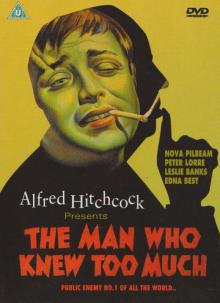 The Man Who Knew Too Much
The Man Who Knew Too Much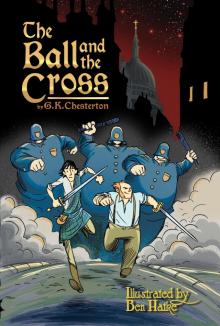 The Ball and the Cross
The Ball and the Cross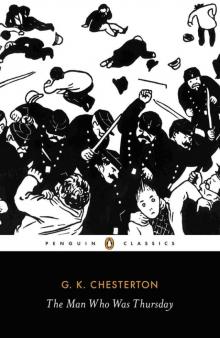 The Man Who Was Thursday (Penguin ed)
The Man Who Was Thursday (Penguin ed)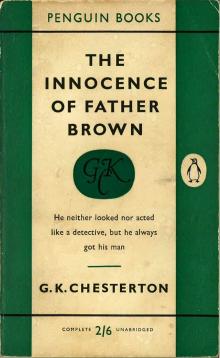 The Innocence of Father Brown
The Innocence of Father Brown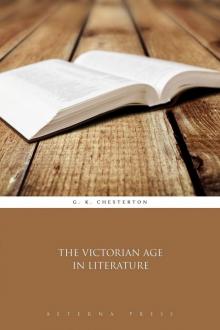 The Victorian Age in Literature
The Victorian Age in Literature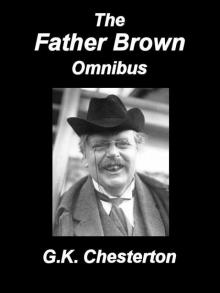 Father Brown Omnibus
Father Brown Omnibus Murder On Christmas Eve
Murder On Christmas Eve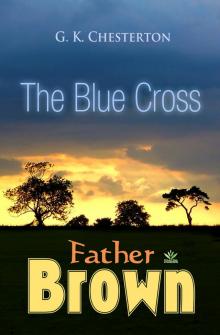 The Blue Cross
The Blue Cross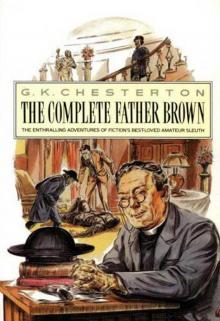 The Complete Father Brown Mysteries Collection
The Complete Father Brown Mysteries Collection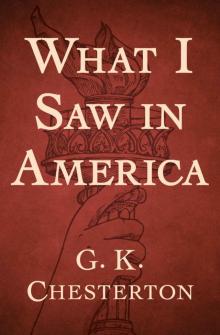 What I Saw in America
What I Saw in America